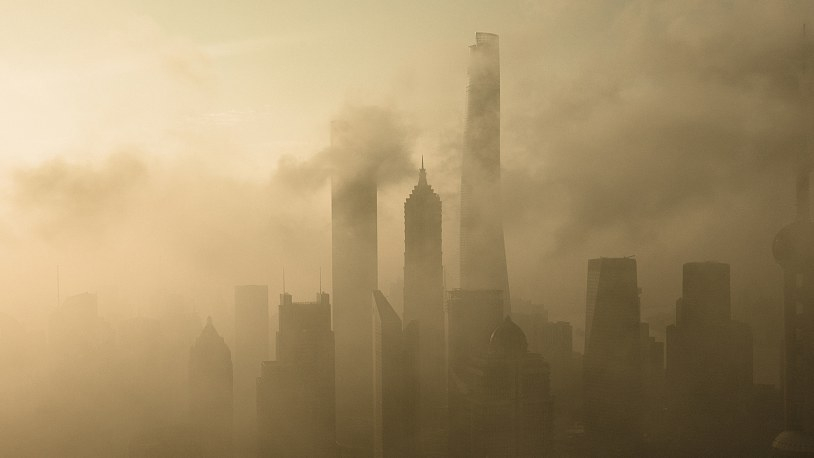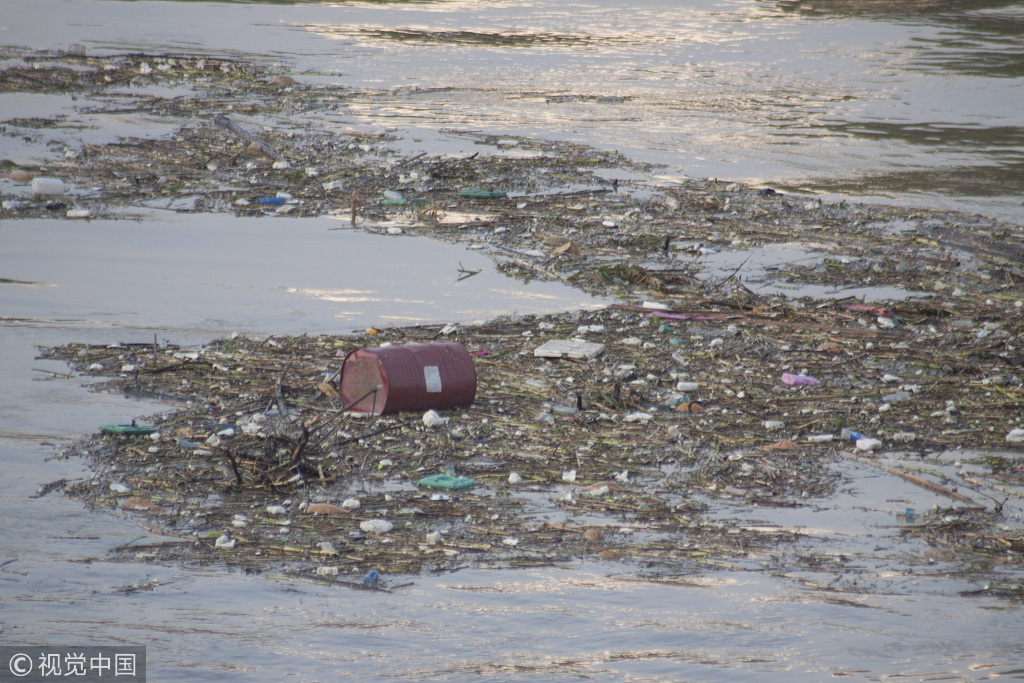
Opinion
14:17, 10-Mar-2019
Environmental safety becomes focus of the Two Sessions
Wu Changhua

Editor's note: Wu Changhua is CEO of Beijing Future Innovation Center and executive director of the Professional Association for China's Environment. The article reflects the author's opinions, and not necessarily those of CGTN.
Air quality, rural environmental safety and water pollution are among the top concerns of the Chinese public in terms of environmental protection as nearly 3,000 deputies from around the country are convening in Beijing to participate in the annual session of the National People's Congress. Other hot topics include enforcement capacity at the local level, solid waste management, and ecological conservation and restoration.
The public today seems to be more aware of and care more about the air they breathe, the water they drink and the food they eat compared to a few years ago when law enforcement and governance were the most concerned topics of people.
Last year, Blue Sky, Clear Water, and Clean Soil were seen as Top Three Toughest Battles to win by the State Council. And a national campaign was kicked off to mobilize actions and accelerate solutions to fundamentally improve environmental safety by 2020.
Challenges still remain
Even though tremendous progress has been made, in particular, air quality in cities, episode after episode of heavy smog often hit Beijing and many other cities.
According to a recent CNN report, out of the 100 most polluted cities in the world in 2018, 94 were in Asia. And dozens of them are Chinese cities. It reminds both the deputies and the public how challenging it remains to deliver the set targets and goals for much improved environmental quality and safety.
When measuring air quality by the number of days when PM 2.5 falls under 65 mg per cubic meters in terms of concentration, nationwide, most cities are on track to reach their goals of reducing air pollution. But the problem appears more complex today.
According to scientific studies, the main reason why the Beijing-Tianjin-Hebei region continues to suffer from frequent heavy air pollution is the intensity of pollutant emissions that often exceed the carrying capacity of the region.
The industrial structure in the region remains "heavy" or fossil fuel-based. The region hosts 40 percent of national production of iron and steel, coking, glass, and raw pharma materials processing. Road transportation remains the dominating means of transportation in the region. Nearly 80 percent of large commodities' transportation relies on diesel trucks.
Apart from this, between October 2017 and March 2019, this region was hit by 23 episodes of heavy smog. Located to the eastern slope of Taihang Mountain, in a half-enclosed topology, the area does not enjoy favorable condition to disperse air pollutants by the wind. When an unfavorable meteorological condition appears, heavy smog naturally cloaks the region with smog.

Harbin issues a three-level warning of heavy pollution weather, February 27, 2019. /VCG Photo
Harbin issues a three-level warning of heavy pollution weather, February 27, 2019. /VCG Photo
Secondary pollutants are recognized as another important contributing factor. Nitrate, sulfate, and ammonium salt, as well as secondary organic matters are the four key factors that contribute to the outburst of heavy smog. The region today is "ammonia rich," meaning that even though we have witnessed decreasing of SO2 emissions, but the concentration of NH3 continues to rise.
Water pollution
Water pollution takes a longer time to address compared to air pollution, according to some experts. Point sources and non-point sources from industries, cities, villages, and any economic activities continue to discharge wastewater to our water body every day.
Besides quality, water scarcity is another issue that needs to be addressed. We often say that "Water is Life." But too much or too little continues to overwhelm the government and the country, business and households in the context of climate change.
To tackle issues concerning water pollution and shortage, one innovation the government has adopted is a mechanism called "Water Mastership" and "Lake Mastership" by holding local decision-makers accountable for local water quality.
Mayors, vice mayors, governors, and deputy governors are named to take charge of different segments of rivers and lakes, and major water bodies in their jurisdiction. Such transparency in accountability hugely strengthens environmental governance.
Soil contamination
Soil contamination seems even more complex to tackle. Heavy metals and chemicals over the decades contaminate soil and groundwater and also rivers, lakes, coastal and marine water.
About 16 percent of the country's farmland is found to have a concentration of heavy metals in excess to stipulated standard. They threaten the health and people and that of the ecosystems and compromise the ecological integrity.
China's farmland today face pollution from wastewater for irrigation, piling up of solid wastes on farmland, pesticide, and heavy metals. They pose a serious threat to food safety. Mining, industrial activities and urban development often fail to manage solid wastes effectively.
The national survey and investigation of soil contamination provide a clear picture of the reality today. With more scientific knowledge and information, government, business, and the public are equipped with more capability to prevent and control soil pollution.
The newly amended Law of Soil Pollution Prevention and Control provides "teeth" to safeguard the country's soil and the land ambient environment. Violators face much more severe penalties, both administrative and financially, and even criminal charges in serious cases.

Water pollution in the Chongqing section of Yangtze River /VCG photo
Water pollution in the Chongqing section of Yangtze River /VCG photo
How to tackle
Addressing pollution and achieving environmental safety requires fundamental shifts of China's economic, industrial and energy structure from reliance on fossil fuels to clean energy.
The fourth Industrial Revolution offers a timely opportunity to do so. Physically, renewable energy is on its track to becoming the dominating energy before 2040. Material science development makes it possible to use less while reuse, recycle and repurpose materials for a much longer life cycle of materials. Digitally, we can enhance efficiency and productivity at a level next experienced before.
The country's clean revolution launched about a decade ago. By embracing the fourth Industrial Revolution, China is well positioned to lead a global clean revolution. And such a revolution can only be won when we ensure that the biological foundation, environmental safety, and ecological security are protected as the foundation.
(If you want to contribute and have specific expertise, please contact us at opinions@cgtn.com.)

SITEMAP
Copyright © 2018 CGTN. Beijing ICP prepared NO.16065310-3
Copyright © 2018 CGTN. Beijing ICP prepared NO.16065310-3